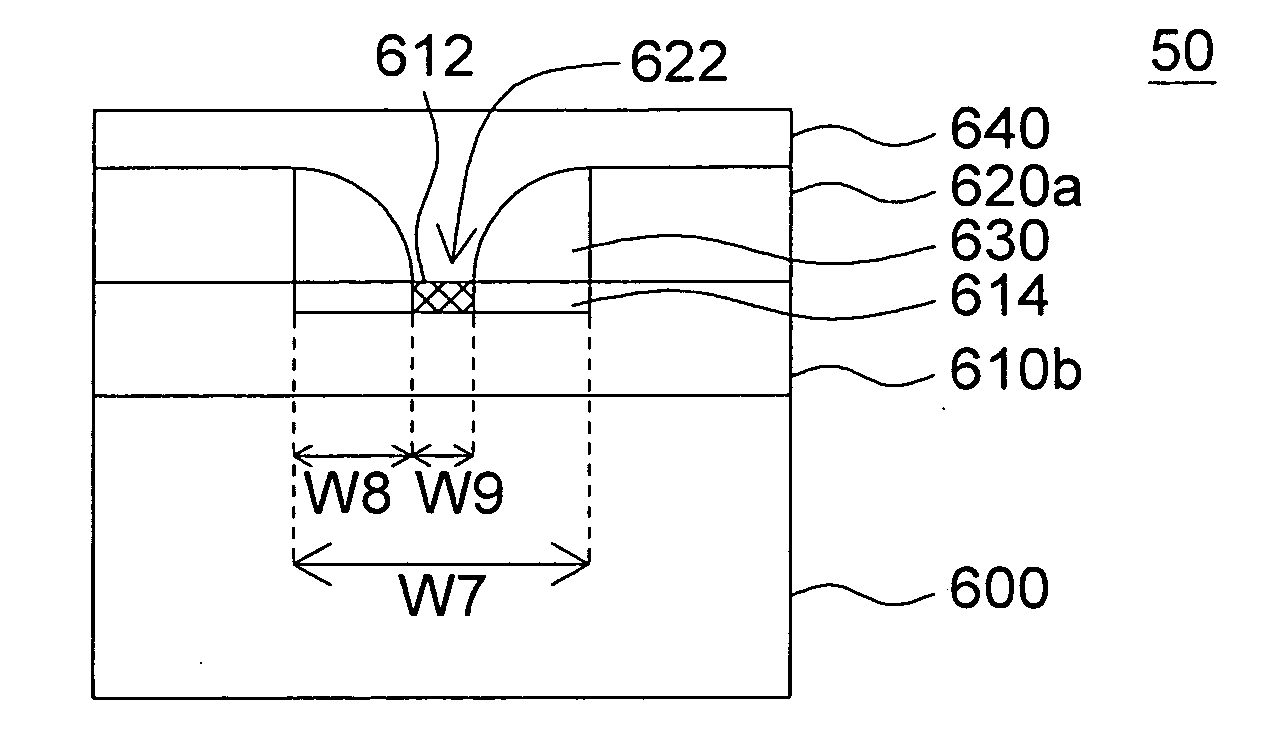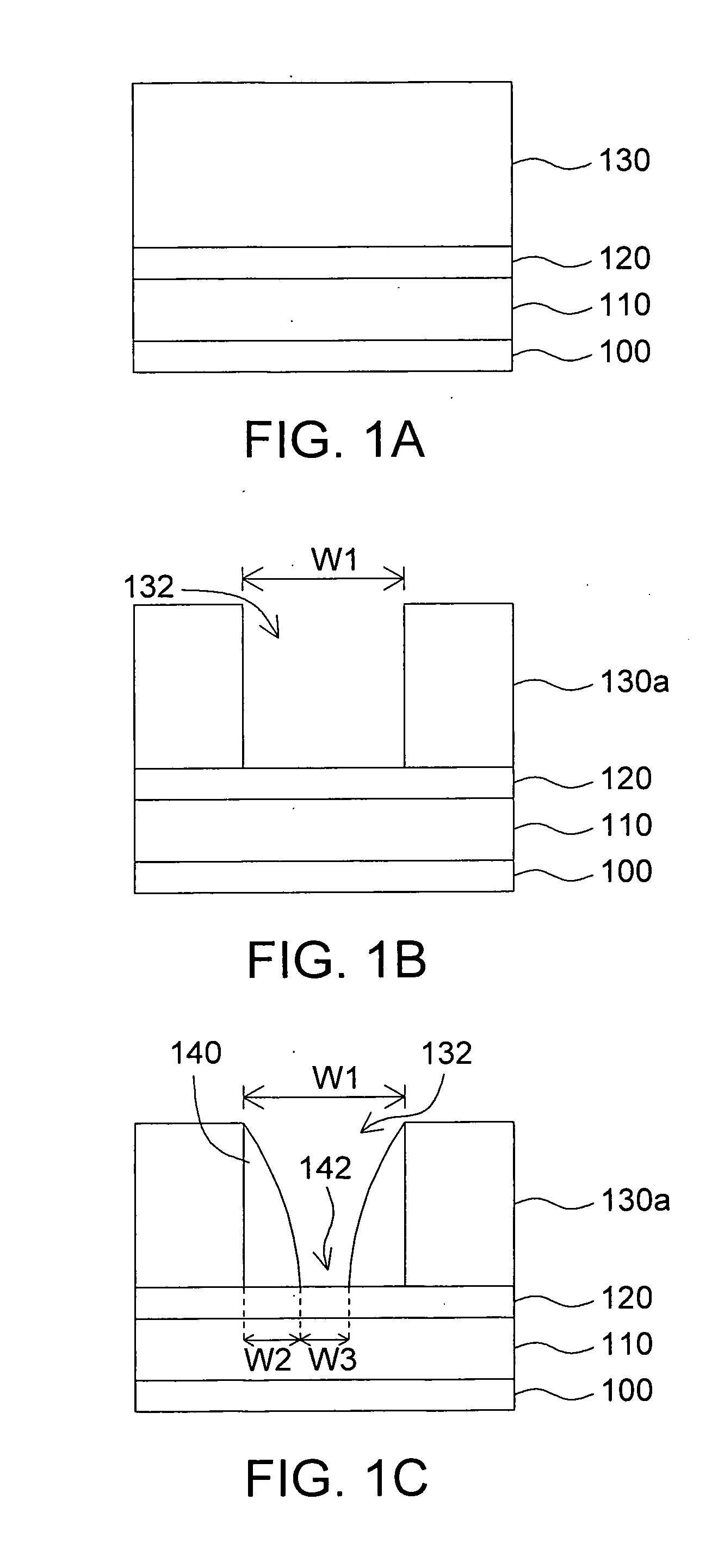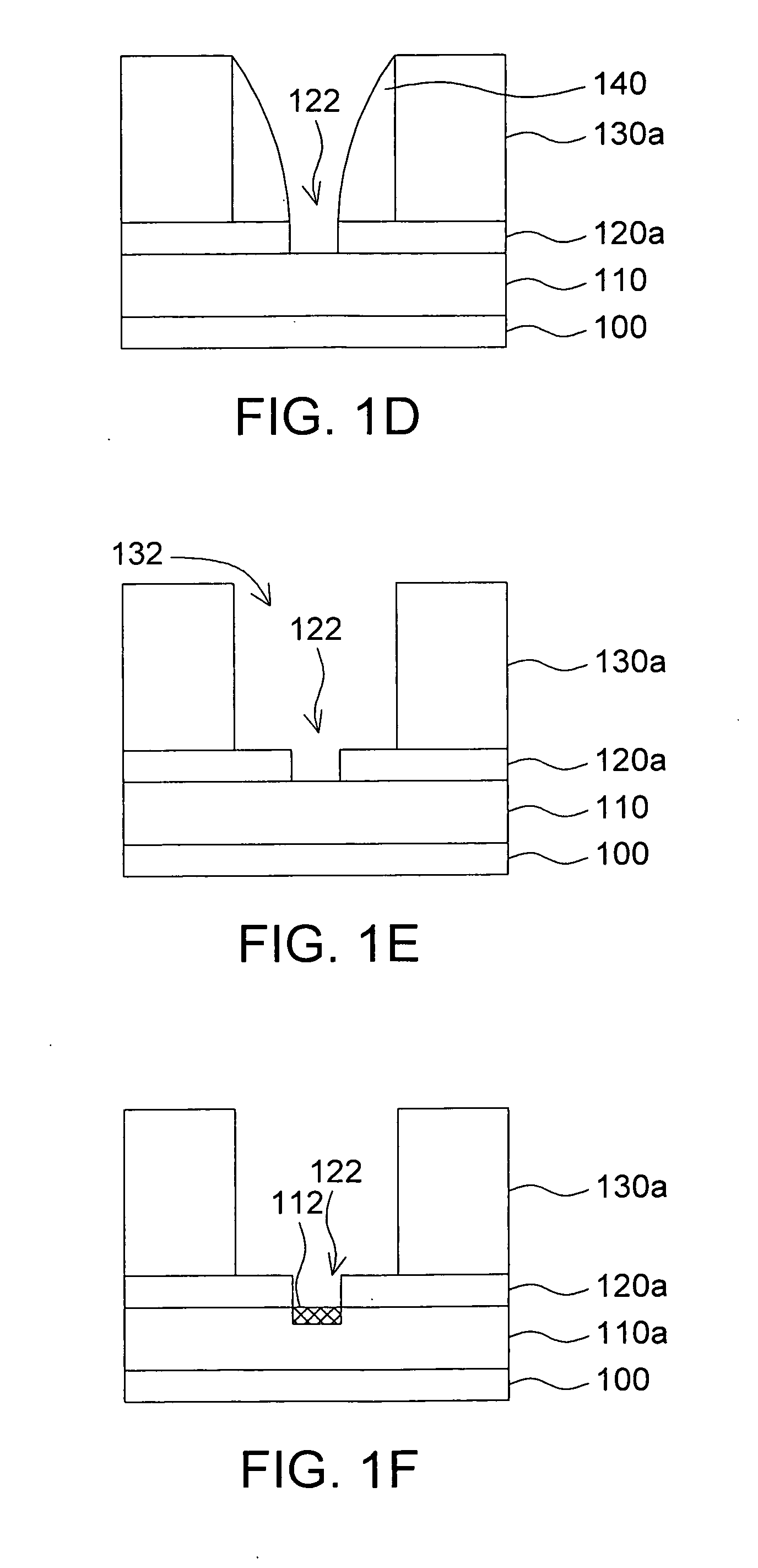Resistive random access memory and method for manufacturing the same
a random access memory and resistive technology, applied in the direction of basic electric elements, electrical equipment, semiconductor devices, etc., can solve the problems of scalability bottlenecks in the manufacturing of such memory, and achieve the effect of increasing resistance and reducing power consumption
- Summary
- Abstract
- Description
- Claims
- Application Information
AI Technical Summary
Benefits of technology
Problems solved by technology
Method used
Image
Examples
first embodiment
[0022]Referring to FIGS. 1A-1G, schemes showing the manufacturing process of a resistive random access memory according to a first embodiment of the invention are shown. Also referring to FIG. 2, a flowchart of the manufacturing process of a resistive random access memory according to the first embodiment of the invention is shown. Referring to FIG. 1A, first, the manufacturing process begins at step 201, a bottom electrode 110 is formed on a substrate 100, wherein the substrate 100 is a silicon wafer for example, and the bottom electrode 110 is made of aluminum-copper alloy or tungsten. Next, the manufacturing process proceeds to step 202, a nitride layer 120 is formed on the bottom electrode 110, wherein the nitride layer 120 is exemplified by silicon nitride in the present embodiment of the invention. Then, the manufacturing process proceeds to step 203, an insulating layer 130 is formed on the nitride layer 120. In the present step, silicon oxide or tetraethoxysilan (TEOS) is de...
second embodiment
[0031]Referring to FIGS. 3A-3H, schemes showing the manufacturing process of a resistive random access memory according to a second embodiment of the invention are shown. Also referring to FIG. 4, a flowchart of the manufacturing process of the resistive random access memory according to a second embodiment of the invention is shown. The steps and element characteristics of the present embodiment of the invention common to that of the first embodiment are not repeated here. Referring to FIG. 3A, the manufacturing process begins at step 401, first, a bottom electrode 310 is formed on the substrate 300. Next, the manufacturing process proceeds to step 402, an insulating layer 320 is formed on the bottom electrode 310.
[0032]Referring to FIG. 3B, as indicated in step 403, the insulating layer 320 is etched as an insulating layer 320a so as to form a contact hole 322 having a width W4.
[0033]Referring to FIG. 3C, as indicated in step 404, a conductive layer 330 is formed in the contact ho...
third embodiment
[0040]Referring to FIGS. 6A-6E, schemes showing the manufacturing process of a resistive random access memory according to a third embodiment of the invention are shown. Also referring to FIG. 7, a flowchart of the manufacturing process of a resistive random access memory according to the third embodiment of the invention is shown. The steps and element characteristics of the present embodiment of the invention common to that of the first embodiment or the second embodiment are not repeated here.
[0041]Referring to FIG. 6A, the manufacturing process begins at step 701, first, a bottom electrode 610 is formed on the substrate 600, and this bottom electrode 610 is made of tungsten. Next, the manufacturing process proceeds to step 702, an insulating layer 620 is formed on the bottom electrode 610.
[0042]Referring to FIG. 6B, as indicated in step 703, the insulating layer 620 is etched as an insulating layer 620a so as to form a contact hole 622 having a width W7.
[0043]Referring to FIG. 6...
PUM
 Login to View More
Login to View More Abstract
Description
Claims
Application Information
 Login to View More
Login to View More - R&D
- Intellectual Property
- Life Sciences
- Materials
- Tech Scout
- Unparalleled Data Quality
- Higher Quality Content
- 60% Fewer Hallucinations
Browse by: Latest US Patents, China's latest patents, Technical Efficacy Thesaurus, Application Domain, Technology Topic, Popular Technical Reports.
© 2025 PatSnap. All rights reserved.Legal|Privacy policy|Modern Slavery Act Transparency Statement|Sitemap|About US| Contact US: help@patsnap.com



